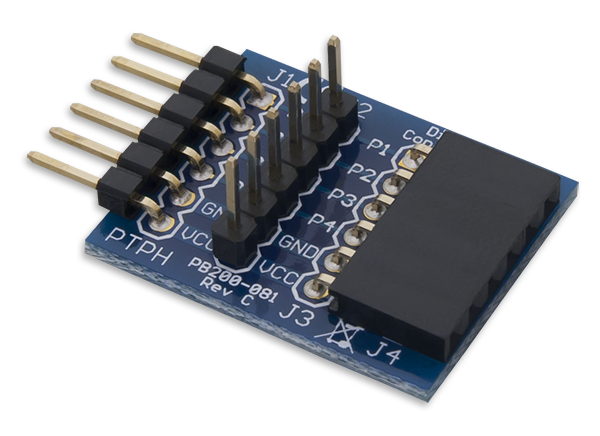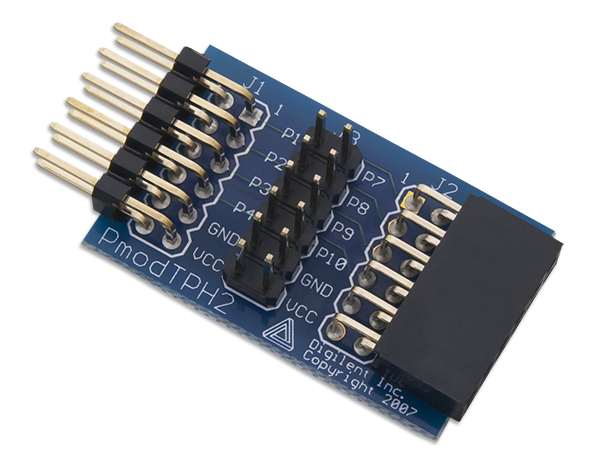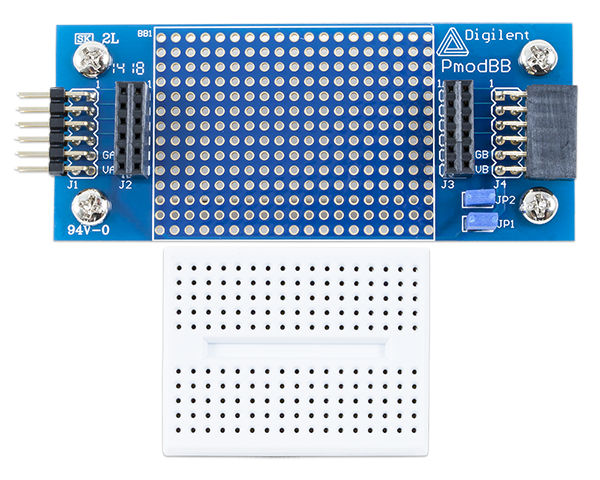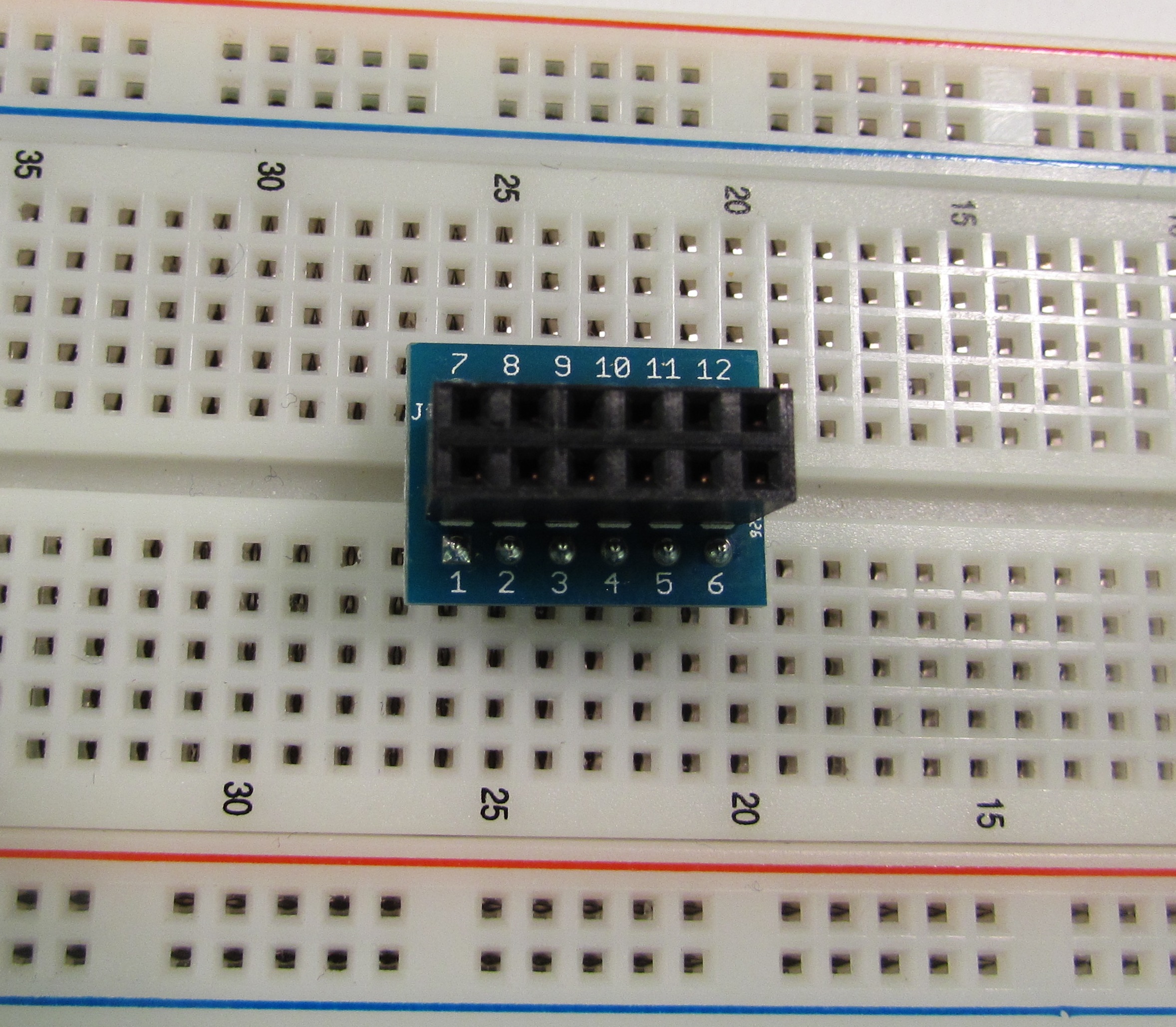Welcome back to the Digilent Blog!
It’s time for another Pmod feature! Today, we’re going to check out the Connector Pmods. Rather than just being strictly limited to a pure input Pmod or pure output Pmod, all of these Pmods are able to easily communicate with the system board in both directions. Although many of these Pmods might be chalked up to simple “pass-through” modules, I certainly wouldn’t label them that way. These Pmods offer some invaluable features that are otherwise not so easily obtained.
So what are some of these invaluable features? One of the key features that many of these Pmods offer is the ability to easily put an oscilloscope (like the Analog Discovery) on each of the pins to see how the host board is communicating with the component on the other side of the connection Pmod. Granted, it is possible to access the pins on a Pmod header directly, but have you tried to get one of t he underside pins on a 2×6 header without shorting anything? It’s horrible and super frustrating. Digilent’s PmodTPH and PmodTPH2 alleviate this stress (and in a sense, may help you live longer) by providing 6 and 12 easy to access straight pin headers that are individually connected to their own input (or output) pin.


If you need to test a specific point multiple times, one of the easiest ways to accomplish this is by using a breadboard. It is certainly possible to use your spare prototyping breadboard as your platform for testing individual points; in fact, this is sometimes preferable when you are trying out a variety of components. However, when you use your spare breadboard, you can very easily find yourself staring at a lot more wires than desired. The PmodBB has its own small breadboard to allow for a few extra tie points to a specific data line, as well as saving you the hassle of having to handle up to a dozen extra wires just to operate the Pmod or other components in the first place.

As I mentioned earlier though, sometimes the spare breadboard is preferable for a myriad of components. But what do you do when you are testing out a Pmod that uses a 2×6 pin header? You can’t exactly plug them straight into the breadboard without having the signals conflicting or shorting each other out. Luckily, the PmodDIP solves this dilemma by separating out the 2×6 header with the 100 mil (0.1 inches) of spacing between the pins to a dual inline package configuration which can then be easily be plugged in across the valley of a breadboard without any electrical issues. It’s quite nice.

The PmodCON4 actually also falls into the Connector Pmod category since it is able to both send and receive data to and from its pair of RCA jacks. You may recall it being featured as one of the Audio Pmods in a blog post a while back. Judging by the link back to the Audio Pmod post, I say that your recollection is perfectly accurate. RCA jacks traditionally work with analog signals, such as a voltage signal, so it is ideal to use this Pmod in conjunction with an ADC or DAC Pmod to interface nicely with your system board which operates on digital signals.

Finally, we are at the last Connector Pmod, which, despite having covered the vast majority of uses for a bidirectional Pmod, is notably different than the rest of them. This is the PmodIOXP; an input/output expansion. By cleverly taking advantage of the I2C interface, which allows you to have multiple devices (or in this case IOs) on a single bus line, users are able to use the lone serial data input and the lone serial clock to configure and use up to 19 different IOs! This is a great trade-off from only needing two outputs of your system board to utilize this large expansion. Granted, when working with a large number of inputs through a single data line, it is very difficult to have a super fast system in terms of timing. However, with its interrupt pin and so many extra pins, this is a small price to pay.

All things considered, this is a great set of options for people who want expand or debug their circuit with less stress, even if the Pmods don’t “do anything”. Keep checking back in with the Digilent Blog for more on Pmods!
